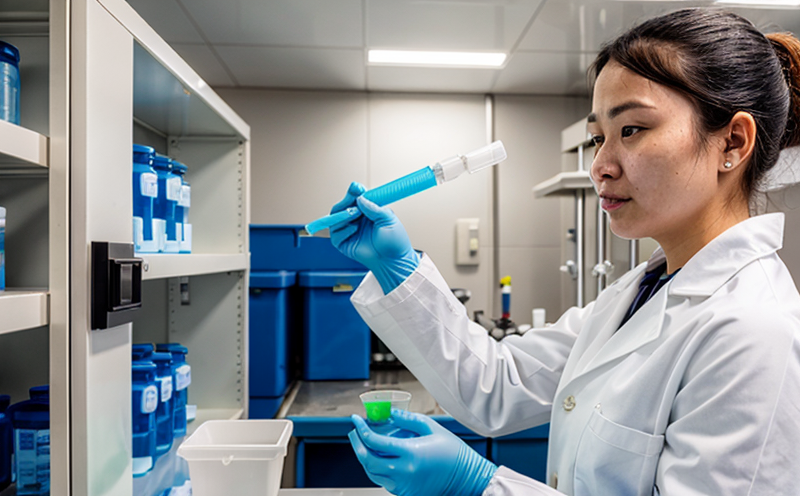USP Staphylococcus aureus Detection Testing
The detection of Staphylococcus aureus in pharmaceutical testing is a critical aspect ensuring product safety and compliance with stringent regulatory standards. This test, as per United States Pharmacopeia (USP) General Chapter Microbiological Examination of Nonsterile Products, plays a pivotal role in safeguarding public health by preventing the introduction of harmful microorganisms into pharmaceutical products.
The presence of S. aureus can lead to serious infections, particularly in immunocompromised individuals and patients receiving medical treatments. Therefore, thorough testing is indispensable for ensuring that pharmaceuticals are free from this bacterium. This service ensures that manufacturers meet the stringent requirements set forth by USP guidelines.
The testing process involves several stages, including specimen collection, preparation, and analysis using culture methods or molecular techniques. Culture-based methods typically involve incubating samples on specific media to observe growth patterns characteristic of S. aureus. Molecular methods may include polymerase chain reaction (PCR) for rapid detection with high sensitivity.
Accurate identification is crucial as the methodology must differentiate between various staphylococcal species, especially since not all are pathogenic. The ability to distinguish S. aureus from other closely related species like Staphylococcus epidermidis can significantly impact the efficacy and safety of a product.
Our laboratory employs advanced technologies and methodologies to ensure precise detection. Our experienced team uses state-of-the-art equipment, including automated microbial identification systems that enhance accuracy and speed. This ensures consistent results across all batches tested, thereby maintaining quality control standards at every stage of production.
The importance of this service cannot be overstated; it is a cornerstone in the continuous improvement of pharmaceutical safety practices worldwide. Regulatory compliance not only protects end-users but also enhances brand reputation among healthcare providers and consumers alike.
Scope and Methodology
The USP Staphylococcus aureus Detection Testing encompasses a series of standardized procedures designed to identify the presence or absence of this bacterium in non-sterile pharmaceutical products. The scope includes both qualitative testing (detecting whether S. aureus is present) and quantitative assessment (estimating the level if detected).
- Qualitative Testing: This involves incubating samples on media that selectively promotes the growth of Staphylococcus species, allowing for visual identification through colony morphology.
- Quantitative Assessment: When a positive result is obtained in qualitative testing, further steps are taken to quantify the amount of S. aureus present using techniques such as serial dilution followed by plating on appropriate media.
The methodology adheres strictly to USP guidelines and other relevant international standards like ISO 11737-2 for microbiological testing, ensuring reliability and accuracy in results. These tests are performed under controlled conditions to minimize contamination risks and ensure consistent outcomes.
Our approach ensures that every sample is processed meticulously from initial receipt through final analysis, maintaining strict adherence to Good Laboratory Practices (GLP) and Current Good Manufacturing Practices (cGMP).
International Acceptance and Recognition
- United States: The USP is widely recognized within the United States, where it serves as a key reference for drug standards. Compliance with USP tests like Staphylococcus aureus detection ensures products meet domestic regulatory requirements.
- European Union: While not explicitly required by EU regulations, many pharmaceutical companies voluntarily comply with USP standards to facilitate easier market access in Europe.
- Australia and New Zealand: Both countries have adopted the use of USP monographs, including those related to microbiological testing, further emphasizing their acceptance internationally.
- Japan: Although Japan has its own pharmacopeia (JP), many companies choose to adhere to both JP and USP guidelines for comprehensive product evaluation.
Competitive Advantage and Market Impact
Adhering to rigorous testing protocols such as the USP Staphylococcus aureus Detection Testing provides significant competitive advantages in both domestic and international markets. Compliance with these standards not only enhances product safety but also demonstrates a commitment to quality, which is increasingly valued by consumers and regulatory bodies alike.
By ensuring that products are free from S. aureus contamination, manufacturers can avoid costly recalls and potential legal issues associated with non-compliance. Additionally, meeting international standards like USP facilitates smoother entry into global markets where these guidelines are widely accepted.
The reputation gained through consistent adherence to high-quality testing practices can significantly boost brand image among healthcare professionals and consumers. This trust translates into increased market share and customer loyalty, contributing positively to long-term business success.





